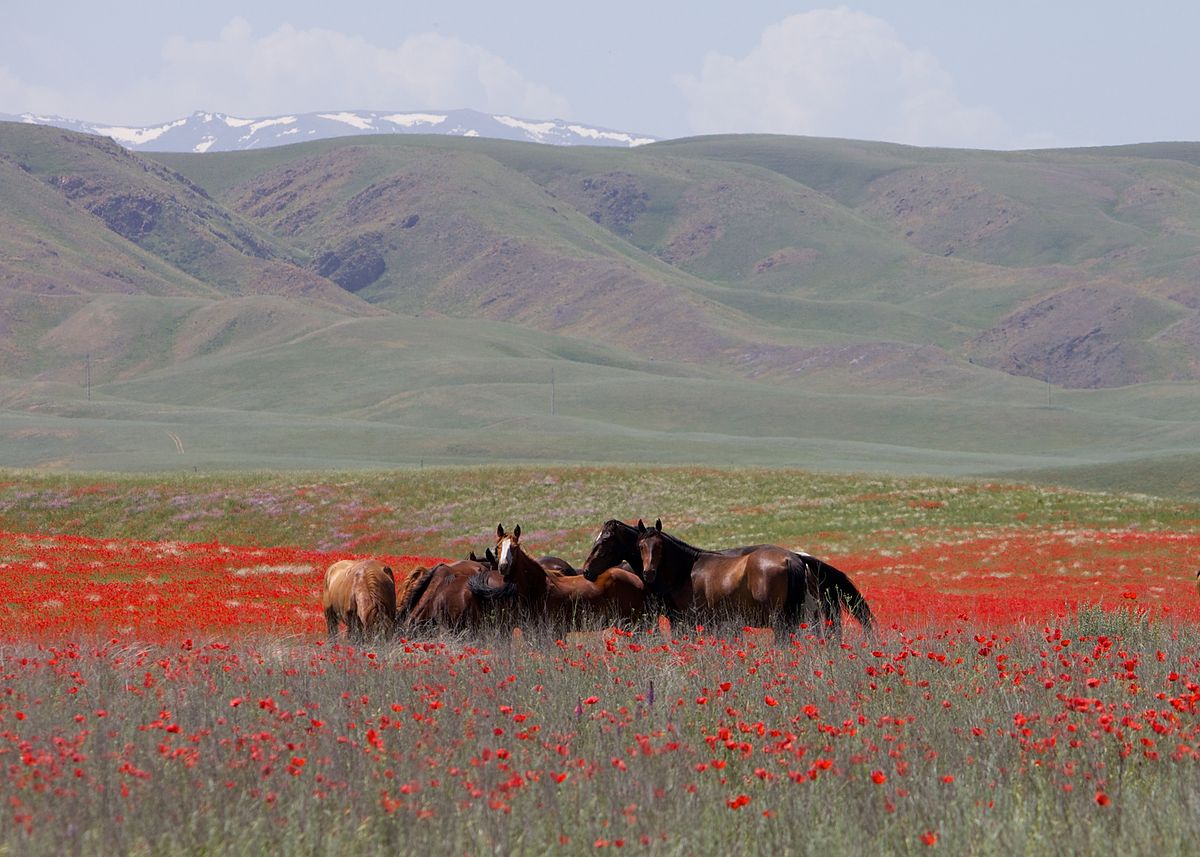Welcome to DU!
The truly grassroots left-of-center political community where regular people, not algorithms, drive the discussions and set the standards.
Join the community:
Create a free account
Support DU (and get rid of ads!):
Become a Star Member
Latest Breaking News
General Discussion
The DU Lounge
All Forums
Issue Forums
Culture Forums
Alliance Forums
Region Forums
Support Forums
Help & Search
Anthropology
Related: About this forumTracing how horse domestication turned the Eurasian Steppe into a highway
Domesticated horses reshaped Central Asia, but where did they come from?
KIONA N. SMITH - 5/11/2018, 11:55 AM

Horses on the Kazakh Steppe.
From Neanderthals to human hunter-gatherers to the mounted horde of Genghis Khan, the Eurasian Steppe has long been a crossroads of humanity. And for the last 5,000 years or so, domesticated horses have shaped how people moved through, lived in, and dominated that vast grassland stretching from Hungary and Romania to Northeastern China. A paleogenomic study adds new evidence to the debate about where people first domesticated horses, and a related study reveals the impact of horsemanship on the peopling of the steppe.
The first evidence we have of domesticated horses comes from a site called Botai in Northern Kazakhstan, where archaeologists have found evidence of milking, corrals, and the use of harnesses. But there’s still debate about whether hunter-gatherers at Botai started domesticating horses—which they’d previously hunted for meat—in order to milk and ride them. It's possible they learned from herders farther west, such as the people whose graves have been found at Khvalynsk dating from around 7,150 to 5,930 years ago.
To get a better picture, Copenhagen University evolutionary geneticist Eske Willerslev and his colleagues examined the ancestry of 74 people who lived on the Eurasian Steppe from 11,000 years ago up through the Medieval period. Among other things, they wanted to see whether the Botai had interbred with the Yamnaya, the pastoral descendants of the Khvalynsk people. If they had, that would be a clue that the Botai had interacted with the Yamnaya enough to perhaps exchange cultural ideas as well as genes.
Score one for the hunter-gatherers
According to genomes retrieved from the bones of three Copper Age skeletons from Botai, an early Bronze Age skeleton from a Yamnaya site in Kazakhstan, and 70 other sets of remains, the two groups hadn’t shared ancestry since at least 15,000 years ago during the Paleolithic. The Yamnaya genomes in the study showed signatures of both European and Caucasian hunter-gatherer ancestry, but the Botai genomes showed no trace of Caucasian ancestry at all. Instead, they carried the genetic signature of ancient East Asian populations, something the Yamnaya and their Khvalynsk ancestors didn’t have.
More:
https://arstechnica.com/science/2018/05/tracing-how-horse-domestication-turned-the-eurasian-steppe-into-a-highway/
InfoView thread info, including edit history
TrashPut this thread in your Trash Can (My DU » Trash Can)
BookmarkAdd this thread to your Bookmarks (My DU » Bookmarks)
2 replies, 881 views
ShareGet links to this post and/or share on social media
AlertAlert this post for a rule violation
PowersThere are no powers you can use on this post
EditCannot edit other people's posts
ReplyReply to this post
EditCannot edit other people's posts
Rec (6)
ReplyReply to this post
2 replies
 = new reply since forum marked as read
Highlight:
NoneDon't highlight anything
5 newestHighlight 5 most recent replies
= new reply since forum marked as read
Highlight:
NoneDon't highlight anything
5 newestHighlight 5 most recent replies
Tracing how horse domestication turned the Eurasian Steppe into a highway (Original Post)
Judi Lynn
May 2018
OP
Snackshack
(2,541 posts)1. It is amazing.
Just how much of an impact Horses had on human civilization.
cilla4progress
(24,728 posts)2. I'm a horse owner ...
Mother? I live in close proximity to their lives. They are amazing. No wonder humans domesticated them. 😁